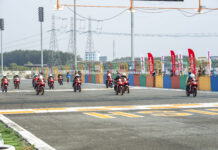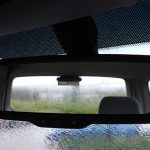Smooth Ride
When your car encounters flooded roads, the first step is to determine the depth of the flooded area. If the water level does not exceed the wheel hub center, it may be safe to proceed. However, if the water level is higher than the center of the wheels, it is best to turn back and avoid attempting to cross.
If the water level is low enough for your car to cross, it is recommended to turn off all unnecessary accessories such as the air conditioning and in-car entertainment systems. This helps reduce the load on the engine.
When crossing a waterlogged area, it is important to drive in a low gear (gear 1 or 2) and maintain a steady speed. Avoid excessive acceleration to prevent water from entering the engine.
Do Not Attempt to Restart
If your car stalls in the middle of a flooded road, it is crucial not to try to restart the engine. Attempting to restart can result in damage to the engine, such as bending or fracturing connecting rods or even the engine block itself, due to a phenomenon known as “Hydrolock”.
Contact a Tow Truck
If possible, it is recommended to push your car to a non-flooded area and call for a tow truck. When requesting a tow truck, it is important to provide essential information about your car to prevent further damage.
For example, if your car is equipped with features such as all-wheel drive (AWD), automatic traction control systems, automatic locking differentials, or an automatic transmission, it should be transported using a flatbed truck (with all four wheels off the ground).
If you have a front-wheel-drive car, the tow truck should lift the front wheels, while for rear-wheel-drive cars, the tow truck should lift the rear wheels.
While waiting for the tow truck, it is advisable to disconnect the car battery to shut down the entire electrical system and avoid any potential damage when submerged in water. You should also push the car to a dry location.
Consider Flood Insurance
When taking your car for repairs, make sure to inform the technicians about the highest water level your car was exposed to. This information will help them assess the impact on your car and take appropriate measures to inspect and clean the systems.
Th?o Anh (TTTÐ)




























.jpg)
.jpg)















![[CAR REVIEW] Range Rover Evoque 2022: Exuding luxury and prestige](https://vnauto.net/wp-content/uploads/2023/11/Xehay-RREvoque-23082022-17-100x70.jpg)
![[CAR REVIEW] Honda Civic Type R 2023: Street racing car priced at 2.4 billion VND in Vietnam](https://vnauto.net/wp-content/uploads/2023/11/xehay-hondacivictyper-21062021-1-100x70.jpg)